| Date | Text | |
|---|---|---|
13 Apr 1597
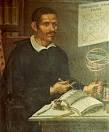
Giovanni Battista Hodierna |
birth Giovanni Battista Hodierna Giovanni Battista Hodierna, Italian astronomer (died 1660) |
|
13 Apr 1622
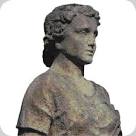
Katharina Kepler |
death Katharina Kepler Katharina Kepler, German healer and mother of Johannes Kepler (born 1546) |
|
13 Apr 1625

Microscope |
Microscope In 1625, the word microscope was coined as a suggested term in a letter written by Johannes Faber of Bamberg, Germany, to Federico Cesi, Duke of Aquasparata and founder of Italy's Accademia dei Lincei (Academy of the Lynx). This Academy, possibly the world's first scientific society, took Lynx for its name, after the animal for its reputation of having exceptional vision. |
|
13 Apr 1728

Samuel Molyneux |
death Samuel Molyneux Died 13 Apr 1728 at age 38 (born 18 Jul 1689). British astronomer (Royal Observatory at Kew) and politician. Together with assistant James Bradley, he made measurements of abberation - the diversion of light from stars. They made observations of the star  Draconis with a vertical telescope. Starting in 1725 they had the proof of the movement of the earth giving support to the Copernican model of the earth revolving around the sun. The star oscillated with an excursion of 39 arcsecs between its lowest declination in May and its the highest point of its oscillation in September. He was unfortunate to fall ill in 1728 and into the care of the Anatomist to the Royal Family, Dr Nathaniel St Andre, whose qualifications were as a dancing master. Molyneux died shortly thereafter. |
|
13 Apr 1728

Paolo Frisi |
birth Paolo Frisi Born 13 Apr 1728; died 22 Nov 1784 at age 56. Italian mathematician, astronomer, and physicist who is best known for his work in hydraulics (he designed a canal between Milan and Pavia). He was, however, the first to introduce the lightning conductor into Italy. His most significant contributions to science, however, were in the compilation, interpretation, and dissemination of the work of other scientists, such as Galileo Galilei and Sir Isaac Newton. His work on astronomy was based on Newton's theory of gravitation, studying the motion of the earth (De moto diurno terrae). He also studied the physical causes for the shape and the size of the earth using the theory of gravity (Disquisitio mathematica, 1751) and tackled the difficult problem of the motion of the moon. |
|
13 Apr 1743
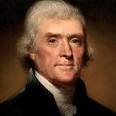
Thomas Jefferson |
birth Thomas Jefferson Born 13 Apr 1743; died 4 Jul 1826 at age 83. American statesman, astronomer, scholar and inventor who was a U.S. president. Throughout his lifetime, he was an extraordinarily learned man, including interests in mathematics and natural sciences. He corresponded with such men as Joseph Priestley, and sometimes contributed time and money to progress in these fields. He collected and classified fossils. He was interested in the experiments being made in ballons and submarines. While visiting Europe, he sent home various mechanical and scientific gadgets produced including a polygraph and phosphorus matches. At his Monticello estate, he practiced scientific farming, and was always on the lookout for a significant new plant or seed. |
|
13 Apr 1748

Joseph Bramah |
birth Joseph Bramah Born 13 Apr 1748; died 9 Dec 1814 at age 66. English engineer and inventor whose lock manufacturing shop was the cradle of the British machine-tool industry. Central in early Victorian lockmaking and manufacturing, he influenced almost every mechanical trade of the time. Like Henry Ford, his influence was probably greater for the manufacturing processes he developed, than the product itself. He took out his first patent on a safety lock (1784) and in 1795 he patented his hydraulic press, known as the Bramah press, used for heavy forging. He devised a numerical printing machine for bank notes and was one of the first to suggest the practicability of screw propellers and of hydraulic transmission. He invented milling and planing machines and other machine tools, a beer-engine (1797), and a water-closet. |
|
13 Apr 1760
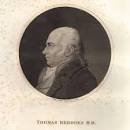
Dr. Thomas Beddoes |
birth Dr. Thomas Beddoes Born 13 Apr 1760; died 24 Dec 1808 at age 48. English physician and philosopher who, in the late 1780s, began to explore the potential medical uses of gases. He founded the Pneumatic Medical Institute in Bristol (1798). The institute offered oxygen therapy, but because Beddoes' assumption–that some diseases would naturally respond to a higher or lower oxygen concentration–was incorrect, the treatments offered no real clinical benefit. However, Humphry Davy, launched his chemistry career there, researching nitrous oxide (“diminished nitrous air”). Beddoes published Hygeia: Or Essays Moral and Medical, on the Causes Affecting the Personal State of the Middling and Affluent Classes, 3 vols. (1802), a formal regimen for daily diet, exercise, and sleep for illness prevention. |
|
13 Apr 1760
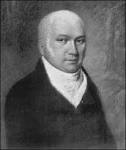
Thomas Beddoes |
birth Thomas Beddoes Thomas Beddoes, reforming English physician (died 1808) |
|
13 Apr 1771
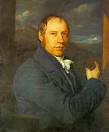
Richard Trevithick |
birth Richard Trevithick Born 13 Apr 1771; died 22 Apr 1833 at age 62. English mechanical engineer and inventor who successfully harnessed high-pressure steam and constructed the world's first steam railway locomotive (1803). In 1805 he adapted his high-pressure engine to driving an iron-rolling mill and to propelling a barge with the aid of paddle wheels. He also experimented with a steam carriage as a road locomotive. In 1812, he invented the Cornish boiler in which the hot flue gasses could also be used to heat the water, so improving efficiency. Trevithick's combined improvements made the new design of Cornish engine do double or treble the duty of the James Watt type, and so they supplanted them as the Watt type had supplanted the Newcomen styles. Lacking business acumen, he died in poverty. |
|
13 Apr 1772

Eli Terry |
birth Eli Terry Born 13 Apr 1772; died 26 Feb 1852 at age 79. American clockmaker who was an innovator in mass production. In 1793, Eli Terry began making clocks in Plymouth, Conn. On 17 Nov 1797, he received the first U.S. clock patent In 1802, Terry introduced wooden geared clocks using the ideas of Eli Whitney's new armory practice to produce interchangeable gears that allowed mass production of very inexpensive household clocks. When the clocks didn't sell, he proved an innovator by becoming the first retailer to offer merchandise on a free-trial, no-money-down basis. Over the following years, Terry developed ways to produce wooden clock works by machine rather than by hand. He is to clocks in the United States as Henry Ford is to automobiles. |
|
13 Apr 1780

Alexander Mitchell |
birth Alexander Mitchell Alexander Mitchell, Irish engineer and inventor of the screw-pile lighthouse (died 1868). |
|
13 Apr 1796
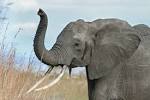
Elephant |
Elephant In 1796, the first elephant brought to the U.S. arrived at New York City from Bengal, India. She was exhibited by Jacob Crowninshield at the corner of Beaver Street and Broadway. The elephant was two years old and 6-1/2 feet high, and had behaviour described as, "It eats thirty pounds of rice besides hay and straw - drinks all kinds of wine and spiritous liquors, and eats every kind of vegetable; it will also draw a cork from a bottle in its trunk." The event was recorded by the New York Argus published on 23 Apr 1796. |
|
13 Apr 1831

Stone crushing machine |
Stone crushing machine In 1831, the first US patent for a stone crushing machine was issued to Benjamin F. Lodge and Ezekial T. Cox of Zanesville, Ohio. |
|
13 Apr 1853

Leopold Gmelin |
death Leopold Gmelin Died 13 Apr 1853 at age 64 (born 2 Aug 1788). German chemist who discovered potassium ferrocyanide (1822), devised Gmelin's test for bile pigments and researched the chemistry of digestion. He published the notable Handbook of Chemistry to comprehensively survey the subject. This was the first thorough update since the era of Lavoisier's influence. Organic chemistry was one of the first edition's three volumes (1817). Gmelin thus reinforced the distinction from inorganic compounds, as had Berzelius, who coined the name organic, only a decade earlier, for substances found in living, or once-living tissues. By the fourth edition (1843), Gmelin's work had expanded to nine volumes, of which six were on organic chemistry. Gmelin coined the names ester, ketone and racemic acid. Johann Georg Gmelin was his great-uncle. |
|
13 Apr 1855

Henry Thomas De la Beche |
death Henry Thomas De la Beche Died 13 Apr 1855 at age 59 (born 10 Feb 1796). English geologist. |
|
13 Apr 1855

Henry De la Beche |
death Henry De la Beche Henry De la Beche (born 1796), geologist. |
|
13 Apr 1865

Amanz Gressly |
death Amanz Gressly Died 13 Apr 1865 at age 50 (born 17 Jul 1814). Swiss geologist and paleontologist who was a pioneer, and regarded by some as the founder, of paleogeography. He is known for his work identifying stratigraphic facies (“aspects de terrain”) recognizing lateral regional variations in the character and fossil content of rock strata resulting from the environmental differences at the time of original deposition. This was a notable departure from the conventional geologists' study of vertical differences in strata. He wrote Observations Géologiques sur le Jura Soleurois on his studies of facies (a term he coined) he found in the Jura Mountains. His fossil collection had 25,000 specimens. He was appointed as an assistant to Louis Agassiz at Neuchâtel. The dinosaur Gresslyosaurus (“Gressly's lizard”) was so named in 1857 to honour him. (The name replaced the preoccupied Dinosaurus Ruetimeyer 1856). |
|
13 Apr 1869

Air brake |
Air brake In 1869, the first U.S. patent for an air brake was issued to George Westinghouse of Schnectady, N.Y., entitled “Improvement in steam-power-brake devices” (No. 88,929). It was used on an experimental train carrying officials of the Panhandle Railroad. Although it demonstrated its value, it was not entirely successful because it took longer for the air to reach the last cars of the train, so each car stopped at a different time. This was corrected with his “triple air brake” patent issued 5 Mar 1872 (No. 124,405). Fifteen years later, he invented an automatic brake. |
|
13 Apr 1874
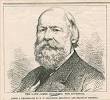
James Bogardus |
death James Bogardus Died 13 Apr 1874 at age 74 (born 14 Mar 1800). American inventor and builder who popularized cast-iron construction, which was commonly used in American industrial and commercial building from 1850-80. He did so by shipping prefabricated sections from his factory in New York City to construction sites. His first iron-fronted building was a 5-story chemists shop (1848). His best-known building was his own 4-story factory that he built on Center Street, New York City, with an exterior consisting entirely of cast-iron piers and lintels. He had previously been a manufacturer of grinding machines, and was also known for his invention of engraving and die-sinking machinery. |
|
13 Apr 1878

Pyotr Petrovich Lazarev |
birth Pyotr Petrovich Lazarev Born 13 Apr 1878; died 23 Apr 1942 at age 64. Soviet physicist and biophysicist known for his physicochemical theory of the movement of ions and the consequent theory of nerve excitation in living matter, which attempts to explain sensation, muscular contraction, and the functions of the central nervous system. He trained as a medical doctor in Moscow. In addition, he studied mathematics and physics on his own. His doctoral thesis (1912) at Moscow University was a fundamental investigation in prequantum photochemistry. He supported the October Revolution. Lazarev established prospecting surveys, which revealed enormous national reserves of iron ore (1919). |
|
13 Apr 1881

Ludwig Binswanger |
birth Ludwig Binswanger Born 13 Apr 1881; died 5 Feb 1966 at age 84. Swiss psychiatrist who founded existential analysis. He was born into a family of noted psychiatrists, including his father Ludwig, his grandfather Robert and his great-uncle Otto. He first met Carl Jung while working at the psychiatric hospital in Zurich. Their visit together with Sigmund Freud in Vienna (1907) led to Binswanger taking up psychoanalysis. He developed an interest in the ideas of Edmund Husserl, Martin Heidegger and Martin Buber, and his perspective evolved more along existential than Freudian lines. He applied the principles of existential phenomenology, especially as expressed by Heidegger, to psychotherapy, and can be said to have been the first truly existential therapist. |
|
13 Apr 1888

John Hays Hammond Jr. |
birth John Hays Hammond Jr. Born 13 Apr 1888; died 12 Feb 1965 at age 76. U.S. inventor whose development of radio remote control served as the basis for modern missile guidance systems. Son of the noted U.S. mining engineer John Hays Hammond, he established the Hammond Radio Research Laboratory in 1911. By 1914, he had laid the foundations for all subsequent radio control, able to send an unmanned yacht on a successful 120-mile trip from Gloucester to Boston and back. With WW I just begun, Hammond added an anti-interference feature to prevent jamming. He also invented a target-seeking system that allowed a remote-controlled ship to home in on an enemy ship's searchlights; and he began work on the first radio-guided torpedo. By 1916, he had earned over 100 patents. |
|
13 Apr 1889

Herbert Osborne Yardley |
birth Herbert Osborne Yardley Born 13 Apr 1889; died 7 Aug 1958 at age 69. American cryptographer who organized and directed the U.S. government's first formal code-breaking efforts during and after World War I. He began his career as a code clerk in the State Department. During WW I, he served as a cryptologic officer with the American Expeditionary Forces in France during WWI. In the 1920s, when he was chief of MI-8, the first U.S. peacetime cryptanalytic organization, he and a team of cryptanalysts exploited nearly two dozen foreign diplomatic cipher systems. MI-8 was disbanded in 1929 when the State Department withdrew funding. Jobless, Yardley caused a sensation in 1931 by publishing his memoirs of MI-8, The American Black Chamber, which caused new security laws to be enacted. |
|
13 Apr 1892
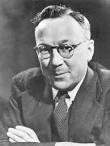
Sir Robert Alexander Watson-Watt |
birth Sir Robert Alexander Watson-Watt Born 13 Apr 1892; died 5 Dec 1973 at age 81. Scottish physicist who is credited with the development of radar location of aircraft, in England. He studied at St Andrews University, taught at Dundee University, and in 1917 worked in the Meteorological Office, designing devices to locate thunderstorms, and investigating the ionosphere (a term he invented in 1926). He became head of the radio section of the National Physical Laboratory (1935), where he began work on locating aircraft. His work led to the development of radar (RAdio Detection And Ranging) which played a vital role in the defence of Britain against German air raids in 1940. He was knighted in 1942. |
|
13 Apr 1899

Alfred Mosher Butts |
birth Alfred Mosher Butts Born 13 Apr 1899; died 4 Apr 1993 at age 93. American architect, artist, photographer and inventor, who invented the board game Scrabble. He carefully analyzed how often each letter is used (that's how he decided how many of each letter to include and how many points each one would earn), then drew a board and glued letters on some balsa tiles. Originally called Criss Cross (1931), the game, which was based on the crossword puzzle and anagrams, was redesigned, renamed as Scrabble, and marketed by James Brunot in 1948. |
|
13 Apr 1901

Jacques Lacan |
birth Jacques Lacan Born 13 Apr 1901; died 9 Sep 1981 at age 80. Jacques Marie Émile Lacan was a French psychoanalyst who gained an international reputation as an original interpreter of Sigmund Freud's work. Probably the most controversial figure in French psychiatry, Jacques Lacan dedicated himself to getting strictly back to Freud by way of structural linguistics. After being expelled in 1953 from the International Psychoanalytic Association for unorthodox analytical practices, Lacan, along with Daniel Lagache, created the Societe Francaise de Psychoanalyse. As his theoretical positions continued to develop, Lacan and his followers went on to found the Ecole Freudienne in Paris in 1964. His Ecrits (1966) gained Lacan international attention. Leading intellectuals flocked to his seminars and he exercised a cryptic but powerful influence on the French cultural scene of the 1970s. Concerned that the Ecole was losing its integrity, Lacan dissolved it in 1980. |
|
13 Apr 1903

Moritz Lazarus |
death Moritz Lazarus Died 13 Apr 1903 at age 78 (born 15 Sep 1824). German philosopher and psychologist, who was a founder of comparative psychology. He held that humanity must be studied from the historical, comparative viewpoint, analyzing the elements that constitute the fabric of society, with its customs, its conventions, and the main tendencies of its evolution. He was Jewish and a leading opponent of anti-Semitism in his time. |
|
13 Apr 1905

Bruno Rossi |
birth Bruno Rossi Born 13 Apr 1905; died 21 Nov 1993 at age 88. Bruno Benedetto Rossi was an Italian-American physicist who was a pioneer in the study of cosmic radiation. In the 1930s, his experimental investigations of cosmic rays and their interactions with matter laid the foundation for high energy particle physics. Cosmic rays are atomic particles that enter earth's atmosphere from outer space at speeds approaching that of light, bombarding atmospheric atoms to produce mesons as well as secondary particles possessing some of the original energy. He was one of the first to use rockets to study cosmic rays above the Earth's atmosphere. Finding X-rays from space he became the grandfather of high energy astrophysics, being largely responsible for starting X-ray astronomy, as well as the study of interplanetary plasma. |
|
13 Apr 1909
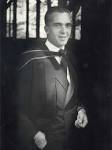
Mervyn Hugh Cowie |
birth Mervyn Hugh Cowie Born 13 Apr 1909; died 19 Jul 1996 at age 87. British wildlife conservationist who was the founder and, for 20 years, director of Kenya's Royal National Parks; he also assisted in the development of parks and tourism throughout East Africa and was appointed CBE in 1960. |
|
13 Apr 1909

Stanislaw M. Ulam |
birth Stanislaw M. Ulam Born 13 Apr 1909; died 13 May 1984 at age 75. Polish-American mathematician who played a major role in the development of the hydrogen bomb at Los Alamos. He solved the problem of how to initiate fusion in the hydrogen bomb by suggesting that compression was essential to explosion and that shock waves from a fission bomb could produce the compression needed. He further suggested that careful design could focus mechanical shock waves in such a way that they would promote rapid burning of the fusion fuel. Ulam, with J.C. Everett, also proposed the "Orion" plan for nuclear propulsion of space vehicles. While Ulam was at Los Alamos, he developed "Monte-Carlo method" which searched for solutions to mathematical problems using a statistical sampling method with random numbers. |
|
13 Apr 1909

Stanislaw Ulam |
birth Stanislaw Ulam Stanislaw Ulam (died 1984), Polish American mathematician. |
|
13 Apr 1913

Robert Hingson |
birth Robert Hingson Born 13 Apr 1913; died 9 Oct 1996 at age 83. American anesthesiologist and inventor known for three major inventions that continue to relieve pain and suffering worldwide today. One is a very portable respirator anesthesia gas machine and resuscitator, called the Western Reserve Midget, used to deliver a short-term, general anesthetic A second came from extensive experiments in the use of anesthesia to prevent pain during childbirth, leading to the invention of the continuous caudal anesthesia techniques. Best known is his "peace gun," a pistol-shaped jet injector that enabled efficient, mass, needle-less inoculation worldwide against such diseases as small pox, measles, tuberculosis, tetanus, leprosy, polio and influenza. It can inoculate 1,000 persons per hour with several simultaneous vaccines. |
|
13 Apr 1916

Hybrid seed corn |
Hybrid seed corn In 1916, the first U.S. shipment of hybrid seed corn was sold to Samuel Ramsay of Jacobsburg, Ohio by Funk Brothers Seed Co., of Bloomington, Illinois. The price was $15 a bushel. |
|
13 Apr 1925

Elwood Haynes |
death Elwood Haynes Died 13 Apr 1925 at age 67 (born 14 Oct 1857). American inventor who built one of the first successful gasoline-powered automobiles. In 1886, when natural gas was found in his hometown of Portland, Indiana, Haynes organized a company to supply it to the town. He devised a method to dehydrate the gas prior to its being pumped through the lines. Also in 1886, he invented a small vapor thermostat used on natural gas. In 1893, he purchased a gasoline engine and designed a "horseless carriage." When Haynes was searching for an alloy that would make a durable spark plug electrode, he invented stellite alloy, which invention is still contributing to society today. Harder than steel and resistant to corrosion, this metal now plays an important part in fabrication of aeronautical materials suitable for exploration of outer space. |
|
13 Apr 1940

Pierre Marie |
death Pierre Marie Died 13 Apr 1940 at age 86 (born 9 Sep 1853). French neurologist who made fundamental contributions to endocrinology. He trained at the Salpetriere under Jean Martin Charcot, and hia assistant. Marie developed an early interest in nervous diseases. His doctoral thesis was on Basedow's disease and its characteristic tremour in extended arms and fingers. In 1982 he published a series of lectures he had given on diseases of the spinal cord. He studied and was the first (1886-1891) to describe acromegaly, a form of gigantism of the extremities (Gr. akron, extremity; megas, large). Marie's discovery that growth disorders result from a disorder of the pituitary gland was a fundamental contribution to the emerging field of endocrinology. |
|
13 Apr 1941
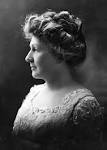
nbsp; Annie Jump Cannon |
death nbsp; Annie Jump Cannon Died 13 Apr 1941 at age 77 (born 11 Dec 1863). American, deaf astronomer who specialized in the classification of stellar spectra. In 1896 she was hired at the Harvard College Observatory, remaining there for her entire career. The Harvard spectral classification system had been first developed by Edward C. Pickering, Director of the Observatory, around the turn of the century using objective prism spectra taken on improved photographic plates. In conjunction with Pickering Cannon was to further develop, refine, and implement the Harvard system. She reorganized the classification of stars in terms of surface temperature in spectral classes O, B, A, F, G, K, M, and catalogued over 225,000 stars for the monumental Henry Draper Catalogue of stellar spectra, (1918-24). |
|
13 Apr 1960
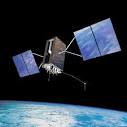
Navigational satellite |
Navigational satellite In 1960, the first U.S. navigational satellite, the Transit-1B was launched from cape Canaveral, Florida on a Thor-Ablestar rocket and the Ablestar carried out the first engine restart in space to refine the orbit.. The payload, weighing 265 pounds, included 2 ultrastable oscillators, 2 telemetry transmitters and receivers, batteries and solar cells. The Transit system was designed to meet Navy's need for accurately locating ballistic missile submarines and other ships. It achieved initial operational capability in 1964 and full capability in Oct 1968. Its navigational broadcasts were switched off deliberately on 31 Dec 1996. The Joint Chiefs of Staff had decided to rely on GPS alone for navigation and positioning, retired after more than 32 years of continuous, successful service to the U.S. Navy. |
|
13 Apr 1960

United States |
United States (astronomy and space ) The United States launches navigation satellite Transit I-b. |
|
13 Apr 1970

Apollo XIII rescue |
Apollo XIII rescue In 1970, an explosion during the Apollo 13 mission led to one of the most spectacular rescue missions in US space history. The explosion aboard the Odyssey spacecraft left the crew stranded for four days more than 200,000 miles from Earth. An oxygen leak forced the Apollo 13 astronauts to abandon ship and return in lunar module. Against all odds, the three astronauts and thousands of others brought the capsule safely back to Earth. The astronauts were Fred Haise, Jack Swigert, and Commander Jim Lovell, and the mission was to have made the third manned landing of the moon. |
|
13 Apr 1975

Max Gluckman |
death Max Gluckman Died 13 Apr 1975 at age 64 (born 26 Jan 1911). (Herman) Max Gluckman was a South African social anthropologist who pioneered the study of traditional African legal systems. His research stressed social conflict and mechanisms for conflict resolution while studying urbanization and social change in colonial Africa. He did extensive research among the tribes of Central and South Africa (1936-47) including studies of Ila, Tonga and Lamba tribes. Examining feud and conflict, he considered their relation to cultural change in Custom and Conflict in Africa (1955). He was openly anti-colonial and engaged directly with social conflicts and cultural contradictions of colonialism, with racism, urbanization and labor migration. |
|
13 Apr 2005
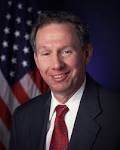
Michael D. Griffin |
Michael D. Griffin (appointments) Michael D. Griffin is confirmed by the U.S. Senate as the next NASA administrator, succeeding Sean O'Keefe. |
|
13 Apr 2008

John Wheeler |
death John Wheeler Died 13 Apr 2008 at age 96 (born 9 Jul 1911). John Archibald Wheeler was the first American physicist involved in the theoretical development of the atomic bomb. He also originated a novel approach to the unified field theory. Wheeler was awarded the 1997 Wolf Prize "for his seminal contributions to black hole physics, to quantum gravity, and to the theories of nuclear scattering and nuclear fission." After recognizing that any large collection of cold matter has no choice but to yield to the pull of gravity and undergo total collapse, Wheeler first coined the term "black hole" in 1967. |